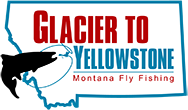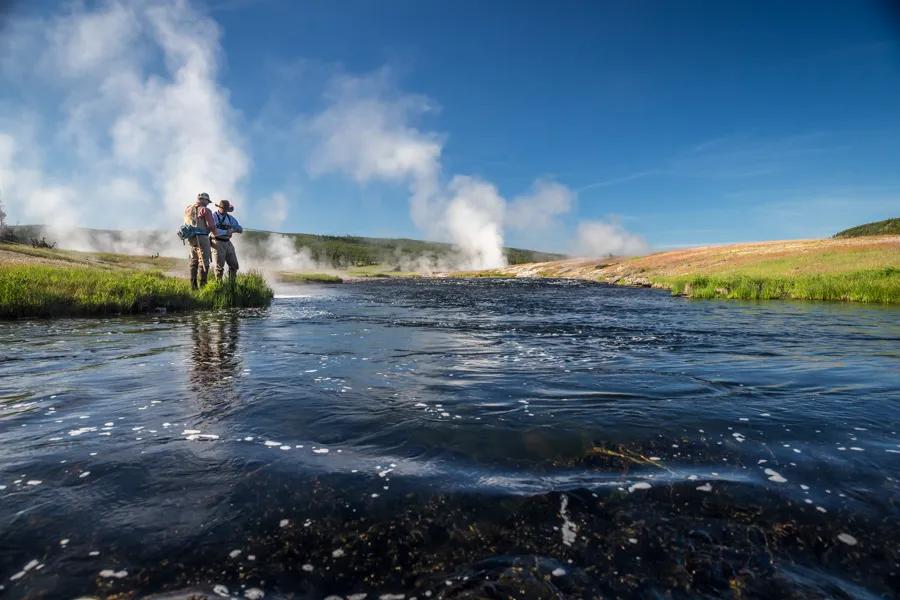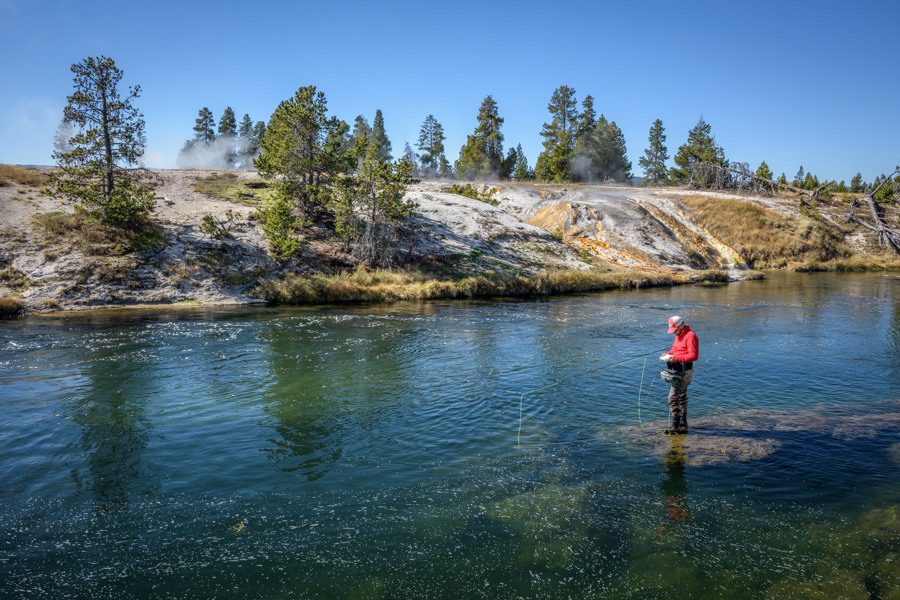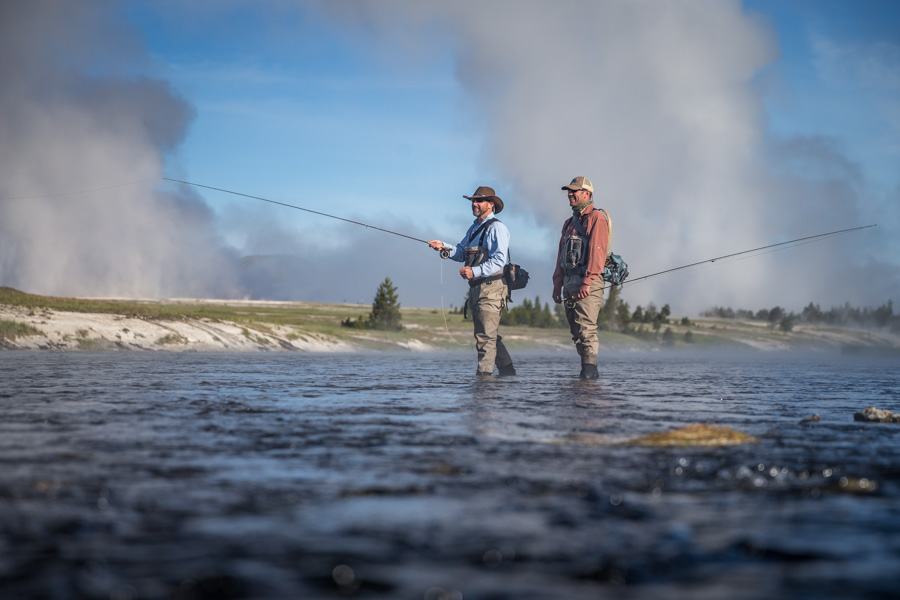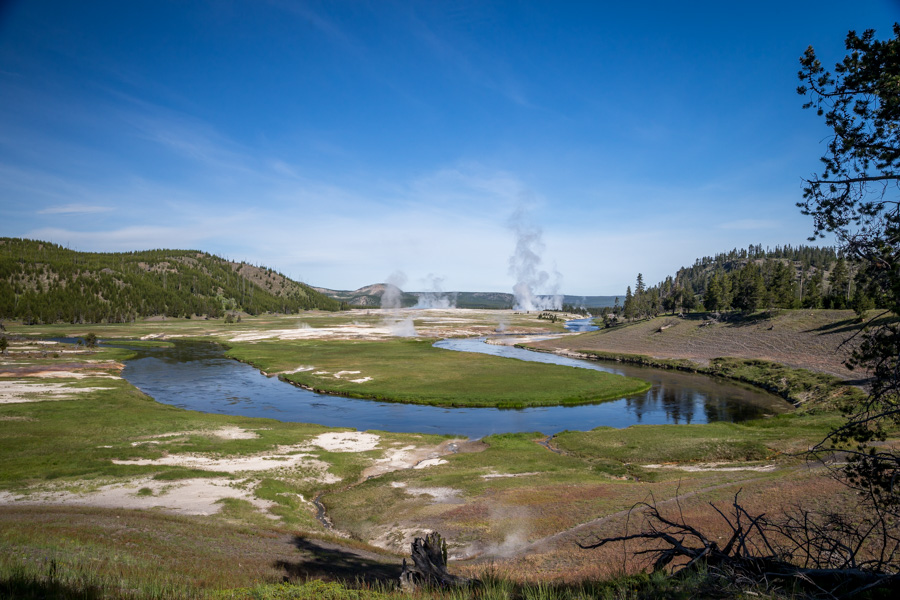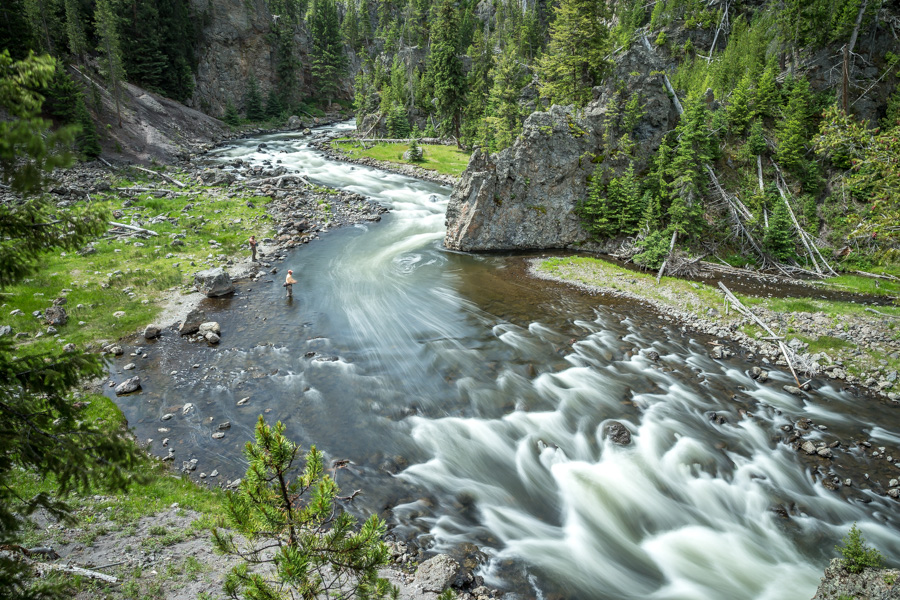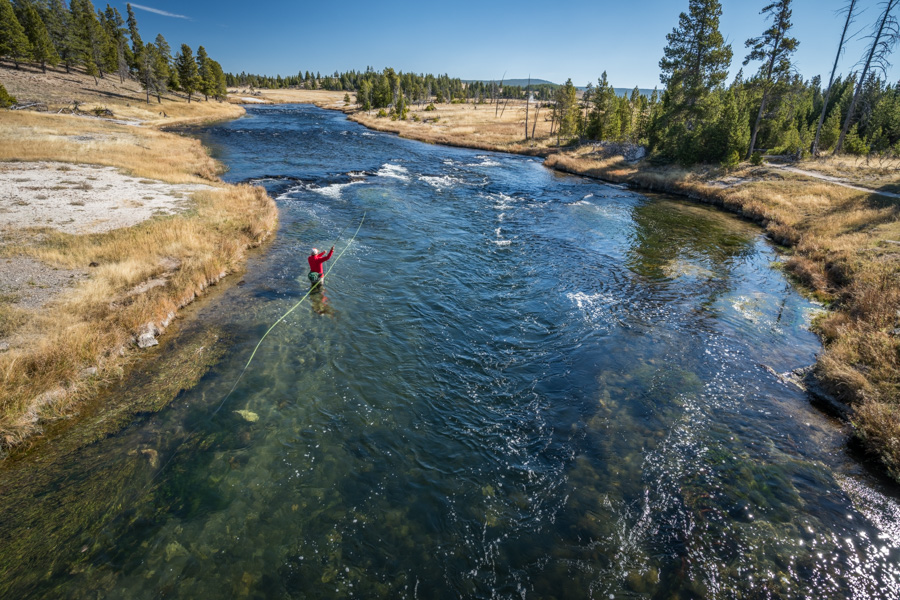Offering a mix of geological wonders, the Firehole offers a classic mixture of brook trout, brown trout and rainbow trout in this nutrient-rich stream that draws anglers from around the world to match their skills with some picky and educated trout. From its headwaters at Madison Lake, the Firehole resembles a mountain creek as it courses downward to Old Faithful and the Geyser Basin. The river is closed to fishing starting at the bridge a mile and a half east of Old Faithful to the bridge at Biscuit Basin. With the discharge of water in the Geyser Basin and the infusion of water from the Little Firehole, the Firehole reaches its maturity. Above Old Faithful the Firehole runs cooler throughout the summer and provides anglers with good opportunities for catching smaller brook trout.
With the discharge of thermally-heated water from the closed section, fishing in the Little Firehole provides cooler water and larger fish in the lower reaches and smaller fish in the canyon pocket water.
From Biscuit Basin to Cascades, a distance of approximately 12 miles, the Firehole glides through a classic meadow with spring creek-type water. Here dry fly fishermen present their match-the-hatch offerings in early summer and fall. The Cascades change the nature of the river as the water spills and tumbles. The Firehole, joining with the Gibbon River, begins the Madison River. Shallow wading water in an idyllic setting promise more than what the river will produce during the summer months, when thermal heating drives the fish to cooler sanctuaries. The best time to fish the Firehole is during the spring and again in the fall. The season opens on the Saturday of Memorial Day weekend. Many sections of the Firehole are easily accessed along the road from the Madison Campground to Old Faithful and beyond.
Firehole River Tactics
The Firehole is an excellent dry fly fishery during both the early and late season. The most exciting hatch is a large species of Caddis known locally as the White Miller. This size #10, blond colored caddis fly generates a tremendous response from the trout. The best time to encounter the Millers is during the middle of June and then again in the middle of September. Blue Winged Olives will be encountered during early June and again in later September and October. These tend to be a bit smaller in the fall, so think #18 instead of a #16 during June. Midges can be encountered any time, and there is a great Pale Morning Dun hatch in June.
When the fish aren't rising the most popular tactic is to swing soft hackles through the riffles and runs. This down and across presentation mimics an insect emerging from the streambed and swimming to the surface to hatch. The takes are usually very aggressive, which makes up for the small average size of most of the fish here. Popular flies include Soft Hackle Pheasant Tails, Soft Hackle Hare's Ear's and various caddis emergers. I like to fish a 4wt rod on the Firehole, but it is prone to be windy here, so the 5wt is nice for less experienced casters.
Contact Montana Angler Fly Fishing for guided fly fishing trips in Yellowstone National Park
